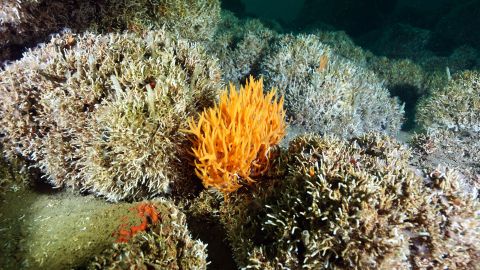Countries concur on historic oceans treaty to safeguard the large seas | Information
Information
—
Nearly 200 nations have agreed to a lawfully-binding “high seas treaty” to shield maritime life in global waters, which cover about half of the planet’s surface area, but have prolonged been fundamentally lawless.
The arrangement was signed on Saturday evening soon after two months of negotiations at the United Nations headquarters in New York ended in a mammoth ultimate session of far more than 36 hours – but it has been two a long time in the earning.
The treaty provides legal instruments to build and manage marine protected parts – sanctuaries to shield the ocean’s biodiversity. It also addresses environmental assessments to consider the potential harm of industrial activities, these types of as deep sea mining, just before they start out and a pledge by signatories to share ocean sources.
“This is a historic day for conservation and a indication that in a divided entire world, shielding nature and persons can triumph about geopolitics,” Laura Meller, Oceans Campaigner at Greenpeace Nordic, reported in a assertion.
The high seas are at times termed the world’s past accurate wilderness. This huge stretch of drinking water – anything that lies 200 nautical miles over and above countries’ territorial waters – would make up much more than 60% of the world’s oceans by floor location.
These waters give the habitat for a prosperity of distinctive species and ecosystems, assist global fisheries on which billions of individuals count and are a crucial buffer in opposition to the local weather crisis – the ocean has absorbed extra than 90% of the world’s extra heat over the past a long time.
Nonetheless they are also hugely susceptible. Local climate alter is resulting in ocean temperatures to increase and ever more acidic waters threaten maritime lifestyle.
Human activity on the ocean is adding force, like industrial fishing, shipping, the nascent deep sea mining marketplace and the race to harness the ocean’s “genetic resources” – substance from marine plants and animals for use in industries these as pharmaceuticals.
“Currently, there are no comprehensive restrictions for the protections of marine lifestyle in this space,” Liz Karan, oceans challenge director at the Pew Charitable Trusts, told Information.
Regulations that do exist are piecemeal, fragmented and weakly enforced, meaning actions on the high seas are usually unregulated and insufficiently monitored leaving them susceptible to exploitation.
Only 1.2% of worldwide waters are secured, and only .8% are determined as “highly secured.”
“There are enormous unmanaged gaps of habitat in between the puzzle parts. It is certainly that negative out there,” Douglas McCauley, professor of ocean science at the University of California Santa Barbara, informed Information.
The new oceans treaty aims to fill all those gaps by furnishing the lawful force to make and handle maritime secured places in global waters. Authorities say this will be crucial for meeting worldwide biodiversity pledges nations made at COP15, the UN Biodiversity Conference in Montreal in December.
A thriving treaty “will aid us realize the objective of conserving or protecting at minimum 30% of the world ocean by 2030,” Monica Medina, the US Assistant Secretary of Condition for Oceans and International Environmental and Scientific Affairs, explained to News by e-mail.

The agreement of the oceans treaty marks a procedure that started about two decades back.
Back in 2004, the UN established up an ad hoc team to explore ocean safety. It wasn’t until finally 2015, that the organization adopted a resolution to develop a binding oceans treaty and, soon after yrs of preparatory talks, negotiations began in earnest in 2018.
“It has been a extensive arc from the initial time the query was raised, to in which we are now,” Karan claimed.
Numerous experienced hoped that 2022 would be the breakthrough, but talks in August – the 2nd spherical that calendar year – ended in failure.
These hottest negotiations have been billed as a remaining probability for the world’s oceans.
There had been factors all through the negotiations wherever some worried that arrangement would never materialize, as conflicts threatened to derail talks. “It’s been a bit of a roller coaster trip,” reported Karan.
Important sticking factors bundled nailing down the processes for building marine secured areas and ensuring fees and added benefits have been shared equitably – primarily as quite a few building nations may not have the technology or ability to do their possess scientific exploration of the high seas.
But just after a grueling final session, the talks ended late Saturday night with an agreement.
“We praise nations for looking for compromises, putting aside variations and offering a treaty that will permit us defend the oceans, create our resilience to local weather change and safeguard the lives and livelihoods of billions of men and women,” Greenpeace’s Meller reported.
International locations now have to formally adopt and ratify the treaty. Then the perform will get started to apply the maritime sanctuaries and to attempt to meet the focus on of guarding 30% of world oceans by 2030. “We have 50 percent a 10 years still left, and we can’t be complacent,” Meller stated.
“If we want the significant seas to be healthful for the up coming century we have to modernize this technique – now. And this is our one, and potentially only, chance to do that. And time is urgent. Local climate improve is about to rain down hellfire on our ocean,” McCauley mentioned.




